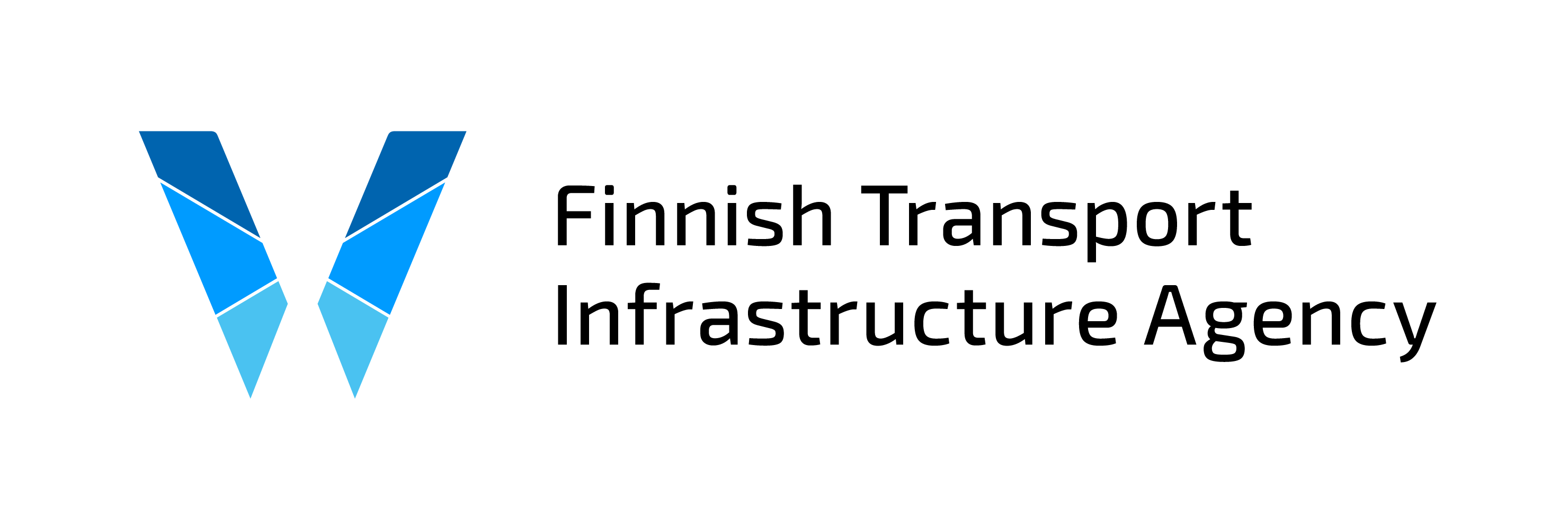Preparations for winter already underway on railways - 5 most common challenges and solutions to these
Published 19.11.2020 9.05
The Finnish Transport Infrastructure Agency maintains the railway network in running order also during challenging winter conditions. Methods include cooperation, anticipation of difficult weather conditions, snow brushes and turnout heating systems.
The Finnish Transport Infrastructure Agency, which owns the railway infrastructure, Finrail, which is responsible for traffic control and railway operators work in close cooperation throughout the year. In winter, the importance of cooperation is emphasised.
"Maintenance, traffic control and operators all carry out their own winter preparation measures, but winter preparations are also carried out in closer cooperation. Joint planning is implemented, for example, in winter preparedness plans specific to maintenance areas,” explains Magnus Nygård, Director of the Maintenance Department at the Finnish Transport Infrastructure Agency.
For example, if difficult conditions have been predicted in Central Finland, the different parties are familiar with each other's preparedness measures. On the basis of this information. the measures needed to cope with difficult weather conditions can be agreed on in cooperation in the area in question. In this way, different actors understand of how railway traffic can be organised.
"If a very large amount of snow falls in a short period of time, it is not always possible to clean all turnouts of snow. We have identified the most essential turnouts in terms of transport, and we aim first and foremost to ensure that they function in all circumstances. When maintenance contractors, traffic control and railway operators are aware of this, it is easier to consider the best possible routes and to schedule train traffic better also in exceptional conditions,” says Jukka P. Valjakka from the Finnish Transport Infrastructure Agency.
Five railway maintenance challenges in winter and solutions to these
Winter always brings its own challenges to railway traffic. The list below contains the five most common challenges caused by winter - and, of course, solutions to these.
Challenge 1: Long periods of snow fall and accumulation of snow on tracks
Solution: Snow is cleared from the track with snowploughs, brushes, and snowblowers. Snow patrols also clear turnouts with equipment such as brushes and shovels. If there is a particularly large amount of snow, it is transported to designated locations. For example, Ilmala has a snow melting field in use.
We also prepared for different conditions in the allocation of resources. If conditions become poor, we increase the number of maintenance personnel and equipment.
Challenge 2: Snow and ice accumulate at turnouts
Solution: The most important turnouts along the railway network are equipped with heating systems that decrease the amount of track turning problems. In addition, our maintenance team and snow patrols are ready 24/7 if there are defects at turnouts. Ice that forms on trains during winter traffic may fall on turnouts and cause malfunctions, which cannot be prepared for completely in advance.
Challenge 3: It is difficult for maintenance to get track possession track sections with frequent traffic
Solution: Track maintenance requires space and time, i.e. sufficient track possession periods. For example, some large railway yards in Eastern Finland are usually full of train and wagon equipment, and busy track sections only have short times when there are no trains travelling along them. The solution is cooperation with traffic control and transport operators. During heavy blizzards, some train services may be cancelled in advance and alternative routes can be agreed to in order to allow more time for maintenance.
Challenge 4: Storms and packed snow cause trees to fall onto the tracks
Solution: For several years, the Finnish Transport Infrastructure Agency has removed trees that are too close to the tracks and pose a risk. The work has progressed well. However, as the railway network is about 6,000 kilometres long, there is plenty of work for years to come.
Trees from areas owned by private landowners may also fall on the track. The Finnish Transport Infrastructure Agency also carries out felling in these areas, but this always requires a discussion with the landowner.
In recent years, Southern Finland has experienced mild winter conditions. During mild conditions, the ground is not frozen and trees that fall during storms can cause disruptions on the tracks. This is another reason why risk trees should be removed.
Challenge 5: Winter surprises train traffic
Solution: Track maintenance receives important data from the Finnish Meteorological Institution that helps in the anticipation of weather conditions. The Finnish Transport Infrastructure Agency uses an advance alarm service tailored for track maintenance. The service allows maintenance to access region-specific information in advance if weather conditions are forecast to become challenging with regard to railway traffic.
In these cases, meteorologists from the Finnish Meteorological Institute also organise briefings related to the weather for the maintenance organisation. The service was introduced for more extensive use this year and has proved useful for example during the Aila storm.
Enquiries
Head of Unit Jukka P. Valjakka,
Railway Maintenance Unit,
Finnish Transport Infrastructure Agency,
Tel. +358 (0)29 534 3925
[email protected]
Director of Department Magnus Nygård,
Maintenance,
Finnish Transport Infrastructure Agency,
Tel. +358 (0)29 534 3576
[email protected]
This is an old article. It may contain deprecated information and the links may not work. Our publications can be found in the Doria publication archive
